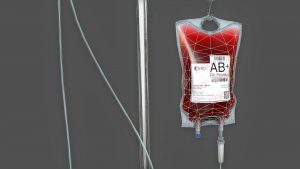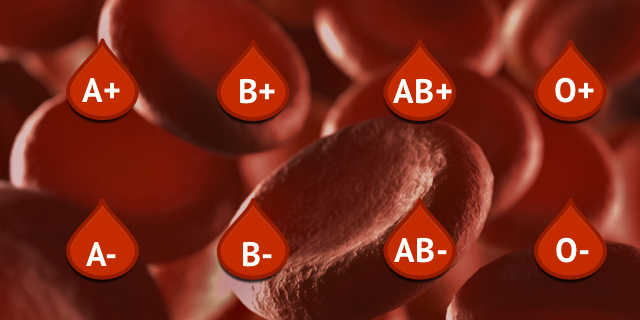Have you ever wondered about blood types? When I was in 5th grade, I needed a science experiment and obtained a kit to test my classmates blood types. They had to lance their own fingers for two drops of blood and conveniently dripped upon a glass slide. By adding a drop full of antibodies to Type A blood in one drop and, in the other, antibodies to Type B blood, I could tell if their blood type was A, B, AB or O. Someone with Type A blood would react to the Type A antibodies, Type B to Type B antibodies, Type AB would have reactions to both sets of antibodies and Type O would not have any reaction to either of the antibodies.
Needless to say, that was many years ago. Basic blood typing remains the same but much more is known about blood types now. The basic groups A, B, AB and O come in two types Rh+ and Rh-. But since the sequencing of the human genome and other subsequent technological advances, 36 blood group systems have been “identified and sequenced” according to the International Society of Blood Transfusions. A system refers to the identified gene that controls one or more antigens. There are more than 600 identified antigens (protein and sugar combination molecules) on the surfaces of red blood cells in humans.
Blood transfusions can be deadly if the red blood cells that are coming into your body have  antigens that you don’t have. That’s because your body will create antibodies–the immune systems’ tool that attacks anything that is “other”–like bacteria, viruses and other people’s blood. The more similar your blood is to the blood you are receiving in a transfusion, the better off you are. If you are a person that needs transfusions on a regular basis, your body can end up with a number of antibodies to antigens and it may become hard to find blood that you can receive.
antigens that you don’t have. That’s because your body will create antibodies–the immune systems’ tool that attacks anything that is “other”–like bacteria, viruses and other people’s blood. The more similar your blood is to the blood you are receiving in a transfusion, the better off you are. If you are a person that needs transfusions on a regular basis, your body can end up with a number of antibodies to antigens and it may become hard to find blood that you can receive.
Evolution and Disease
Why do we have A, B, AB and O blood types? How have so many antibodies evolved? Exploring human history gives a clue.
People with A, B, AB are more likely to form blood clots. Medical historians believe that this ability gave them a survival advantage in child birth and wound management–these humans were less likely to bleed to death.
In areas that are high in cholera, people Type O people are more likely to have severe infections. There are not many people with Type O blood in an area where cholera pandemics start, like Bangladesh. In a more recent event- an E coli outbreak in Scotland in 1996-almost 90% of those who died had blood Type O.
But then why did Type O evolve? There is some discussion as to which came first, Type A or Type O. However, Type O has a greater incidence in Africa and researchers speculate that malaria has helped to select out people with Type O blood. Malaria infects red blood cells, making them pimply or prickly shaped. These infected cells tend to clump causing clots that can and do impact the function of organs and the brain. For those with Type O, stickiness is less of an issue, thus people with Type O would be more likely to survive malaria.
People who do not have the Duffy blood group are also protected from malaria. Almost all people in Western Africa have this protective blood type. Other rare blood groups in South East Asia are also protective against malaria.
Migration and Founders Effect
There is significant evidence that humans began in Africa and migrated throughout the world. Small groups of people migrated together resulting in places and peoples that have similar blood types. This phenomenon, the loss of genetic variation when small groups become isolated from larger populations is called founders effect. It has been shown from research on mitochondrial DNA that a group as small as 10 to 20 individuals founded the Native American population. Native Americans have predominantly Type O blood.
What’s your blood type?
Having a rare blood type can make getting a transfusion in an emergency or healthcare situation extremely difficult. The Red Cross and others are constantly calling for people to donate blood and they need people with as much diversity in their heritage as possible so that there is blood available for all. Recently, significant publicity occurred when it was discovered that a two-year-old child had a very rare blood type. The reason for this discovery was the toddler had just been diagnosed with neuroblastoma and would need surgery. Her blood was missing the Indian-B antigen and Big E antigen making it extremely rare. Only five donors have been found with her type of blood.
What is your blood type?






Blood clots, DVT’S, are rapidly becoming a serious epidemic. Why isn’t more research done to find treatment to prevent the causes? Genetic and DNA research?